Disclosure: This article contains affiliate links. We may earn a commission from purchases at no extra cost to you, which helps our travel content.
Standing at the edge of Place des Palmistes, watching the soft tropical light filter through the royal palm fronds, I'm struck by the peculiar historical juxtaposition that defines Cayenne. This small capital city on South America's northeastern shoulder exists in a fascinating liminal space—a French overseas department where European colonialism, Caribbean influences, and Amazonian heritage converge beneath the shadow of modern rocket launches. Growing up with a father who worked the Forth ferries, I developed an early appreciation for how transportation shapes culture. But Cayenne offers something truly unique: a place where centuries-old colonial buildings stand just kilometers from one of the world's most advanced spaceports. For students of history, there's perhaps no better place to witness the complete arc of European presence in the Americas—from the brutal plantation economy of the 17th century to the high-tech European Space Agency operations of today.
Place des Palmistes: The Colonial Heart
Every proper exploration of Cayenne's historical timeline should begin where the city itself took shape. Place des Palmistes, with its orderly rows of royal palms and wrought-iron bandstand, embodies the French colonial aspiration to create order amid the wild abundance of the tropics.
I arrived here on a humid January morning, the air heavy with the promise of afternoon rain, and found myself tracing the same paths walked by colonial administrators, enslaved Africans, transported convicts, and now—rocket scientists. The square hasn't changed substantially since the late 19th century, when it was remodeled to echo the grand public spaces of metropolitan France.
Surrounding the square are colorful Creole houses with their distinctive shutters and balconies—architectural solutions to the equatorial climate that blend European sensibilities with tropical practicality. I spent a leisurely hour at Café de la Place, sipping surprisingly excellent espresso while watching the city come alive. The café owner, noticing my interest in the buildings, pointed out subtle architectural details I'd missed—the carved wooden fretwork that reveals which properties once belonged to wealthy Chinese merchants, and the particular shade of yellow that signified government buildings during the colonial era.
For those wanting to properly document this historical center, I found my compact binoculars indispensable for spotting the architectural details on upper floors and distant buildings that tell so much of the city's story.

💡 Pro Tips
- Visit Place des Palmistes early morning (before 9am) or late afternoon (after 4pm) to avoid the strongest equatorial sun
- The Maison Félix Éboué on the square's edge offers excellent historical context through photographs and documents
- Look for the subtle differences in architectural styles that reveal the building's era and the owner's origins
Fort Cépérou: Witnessing the Colonial Struggle
Perched atop a modest hill overlooking the confluence of the Atlantic Ocean and the Cayenne River sits Fort Cépérou—or rather, what remains of it. Named after the indigenous Galibi chief who originally controlled these lands, the fort represents the earliest phase of European colonization and the resistance it encountered.
The climb to the fort is relatively gentle, but the tropical heat makes it feel more strenuous than the elevation would suggest. I made my way up mid-morning, equipped with my insulated water bottle (an absolute necessity in this climate) and found myself alone among the ruins, with panoramic views of the city, harbor, and Devil's Island in the distance.
While little remains of the original 1643 wooden structure, the stone fortifications from the late 17th century tell a complex story of imperial competition. The fort changed hands multiple times between French, Dutch, English, and Portuguese forces—a physical reminder that European claims to this region were constantly contested, not just by indigenous resistance but by rival colonial powers.
What struck me most was how the fort's position reveals the strategic thinking of early colonizers. From this vantage point, one could control access to the river, monitor approaching ships, and survey the surrounding territory. It's a physical manifestation of the colonial mindset—the desire to see, control, and defend newly claimed territories.
The fort now houses a small but informative exhibition on Cayenne's early colonial period. Artifacts recovered from archaeological digs—clay pipes, musket balls, pottery fragments—offer tangible connections to the daily lives of those who occupied this space centuries ago. Most poignant are the indigenous artifacts that predate European arrival, a reminder of whose land this truly was.

💡 Pro Tips
- Visit in the morning before the heat becomes too intense
- Bring binoculars to spot the Îles du Salut (including Devil's Island) on clear days
- The small museum has limited hours (Tuesday-Sunday, 9am-4pm), so plan accordingly
Transportation Museum: From Penal Colony to Space Port
For someone whose fascination with transportation began on Scottish ferries, Cayenne's small but excellent Transportation Museum felt like it was curated specifically for me. Located in a restored colonial warehouse near the harbor, this museum traces French Guiana's remarkable evolution from a notorious penal colony to the home of Europe's primary spaceport.
The museum's first section focuses on the infamous bagne (penal colony) that operated from 1852 to 1953. Through photographs, letters, and personal effects, it documents how transportation itself was weaponized as punishment—the journey to French Guiana was often as brutal as the conditions that awaited convicts upon arrival. I was particularly moved by a collection of simple wooden models of ships carved by prisoners, each representing their lost connection to the wider world.
What makes this museum truly special is how it connects this dark history to French Guiana's current identity as home to the Centre Spatial Guyanais (Guiana Space Centre). The transition from colonial outpost to space gateway is presented not as a clean break but as a complex evolution. Interactive displays explain how the same geographic features that once isolated the penal colony—proximity to the equator, vast unpopulated areas, and access to the Atlantic—made it ideal for a spaceport.
For visitors keen to explore both the colonial sites and the space center, I recommend picking up a detailed map from the museum shop. I found the waterproof notebook invaluable for taking notes throughout my visit, especially when afternoon showers threatened my paper guidebook.
The museum curator, Madame Bertillon, whose grandfather had been a guard at the penal colony, shared fascinating insights about how local attitudes toward this difficult history have evolved. 'We are not defined by the bagne,' she told me, 'but we cannot understand our present without acknowledging it.'
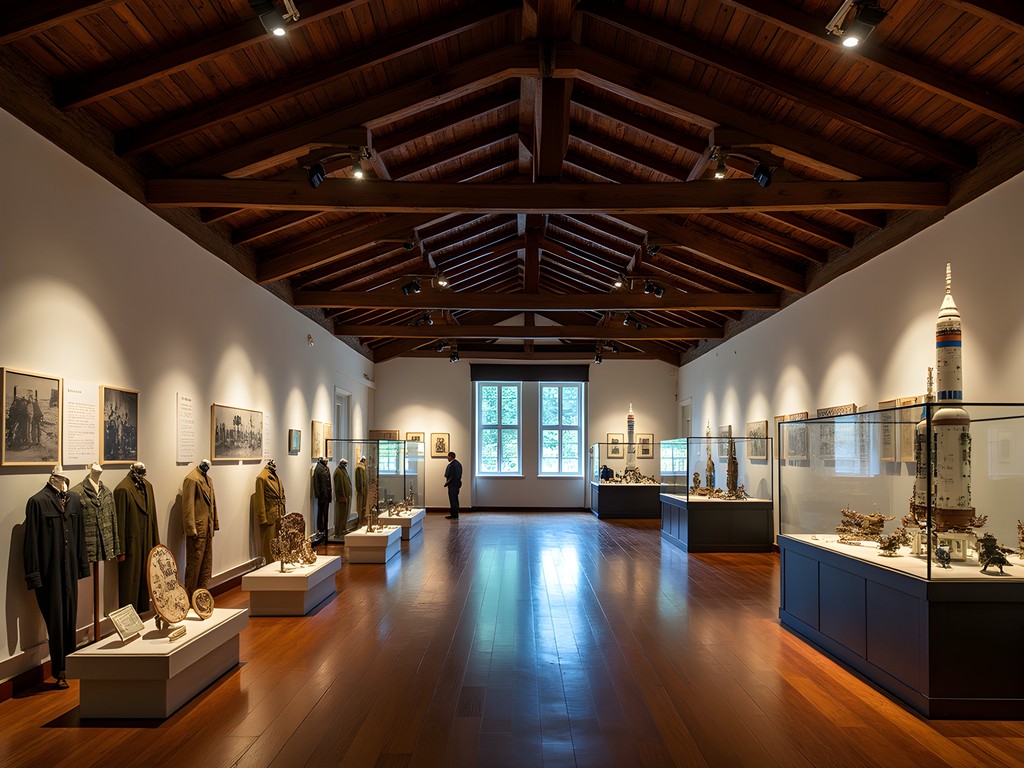
💡 Pro Tips
- Allow at least two hours to properly explore the museum's collections
- English translations are available but sometimes limited—basic French knowledge helps
- The museum offers a combined ticket with guided tours to Devil's Island, which is worth the investment
Musée Départemental: Cultural Fermentation in the Tropics
If Fort Cépérou represents the beginning of French colonial presence and the Transportation Museum charts its evolution, then the Musée Départemental Alexandre-Franconie offers something equally valuable—a window into how diverse cultures fermented together in this tropical pressure cooker.
Housed in a perfectly preserved 19th-century colonial mansion, the museum contains a remarkable collection that spans natural history, archaeology, and colonial life. But what fascinated me most—perhaps unsurprisingly given my background—was the extensive exhibition on food preservation and fermentation techniques across French Guiana's various communities.
Growing up with a mother who made traditional Scottish preserves, I've developed a keen interest in how different cultures solve the universal problem of food preservation. The museum's collection reveals how European techniques merged with indigenous knowledge and African traditions to create uniquely Guianese approaches to fermentation.
The cassava processing displays were particularly illuminating. This staple crop contains cyanide compounds that must be processed out before consumption—a technique indigenous peoples mastered centuries ago using a remarkable tool called a tipiti, a woven tube that squeezes toxins from grated cassava. European colonizers, initially dismissive of local knowledge, eventually adopted these methods when their own food preservation techniques failed in the tropical climate.
Equally fascinating were the exhibits showing how enslaved Africans maintained and adapted their fermentation traditions, creating distinctive condiments like saka-saka that would become integral to Creole cuisine. These culinary adaptations represent a form of cultural resistance and resilience that the museum thoughtfully acknowledges.
I spent nearly three hours exploring the collections, taking detailed notes and photographs (where permitted) for my ongoing research on fermentation traditions. The museum gift shop offers excellent books on Guianese culinary history, including some with traditional recipes adapted for modern kitchens.
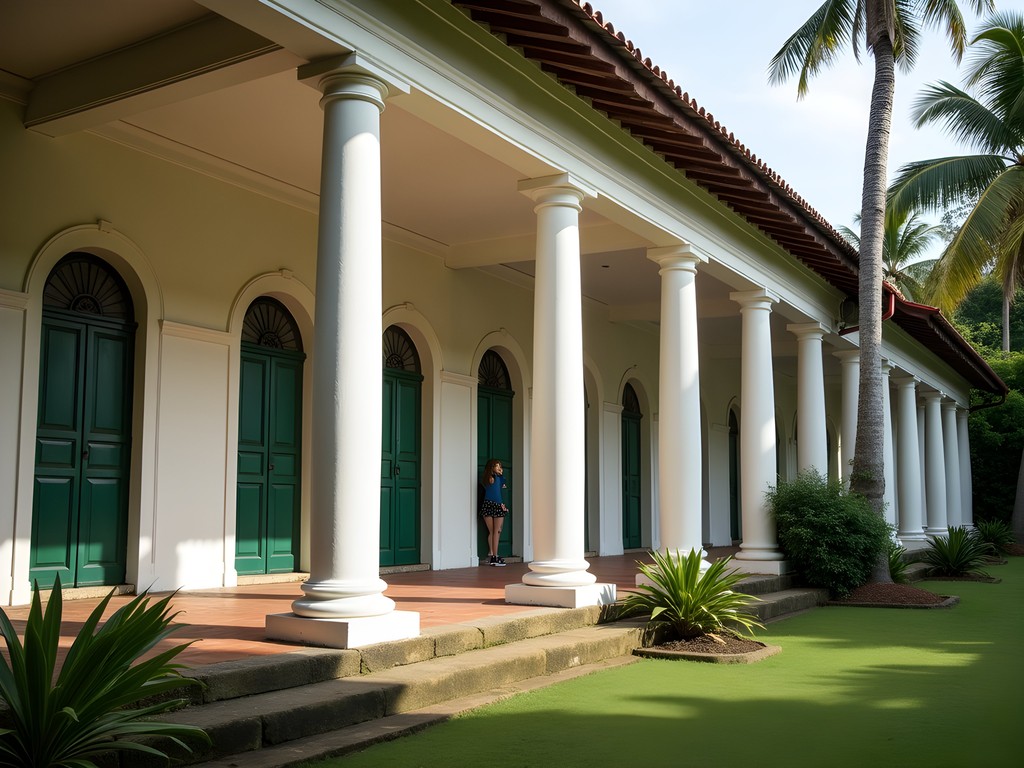
💡 Pro Tips
- Visit on Thursday afternoons when local guides offer free tours in multiple languages
- The building itself is historically significant—pay attention to the architectural details
- The small garden behind the museum features medicinal and culinary plants important to various cultural traditions
Centre Spatial Guyanais: Where History Launches into the Future
No exploration of Cayenne's historical timeline would be complete without venturing 50 kilometers northwest to Kourou, home to the Centre Spatial Guyanais (CSG). This journey—easily arranged via public transportation or guided tour—represents the culmination of French Guiana's remarkable historical trajectory.
I booked a tour through my hotel (most accommodations in Cayenne offer this service) and found myself part of a small international group headed to witness a piece of living history. Our guide, Jean-Claude, was a second-generation CSG employee whose father had helped build the original launch facilities in the 1960s.
The contrast between Cayenne's colonial architecture and the ultra-modern facilities of the spaceport couldn't be more striking. Yet as Jean-Claude explained, the selection of French Guiana for Europe's primary launch site was directly connected to its colonial status—France already controlled this equatorial territory, making it politically and logistically simpler than establishing a new international launch site.
The visitor center offers excellent exhibitions on the history of the European space program and the specific advantages of launching from near the equator (the Earth's rotation provides an extra boost, reducing fuel requirements). But what I found most compelling were the stories of how the spaceport transformed local communities. Jean-Claude spoke candidly about both the economic benefits and the social disruptions caused by this high-tech industry being superimposed on a formerly colonial territory.
If you're fortunate enough to visit during a launch window (check the Arianespace website for schedules), the experience is unforgettable. I watched an Ariane 5 rocket carrying communications satellites ascend from the same shores where convict ships once landed—a juxtaposition that encapsulates French Guiana's extraordinary historical journey.
For serious space enthusiasts, I recommend bringing a good pair of zoom binoculars to get a closer look at the rockets on the launchpad and during the initial stages of flight. The visitor center has some available to rent, but they're often in high demand, especially on launch days.
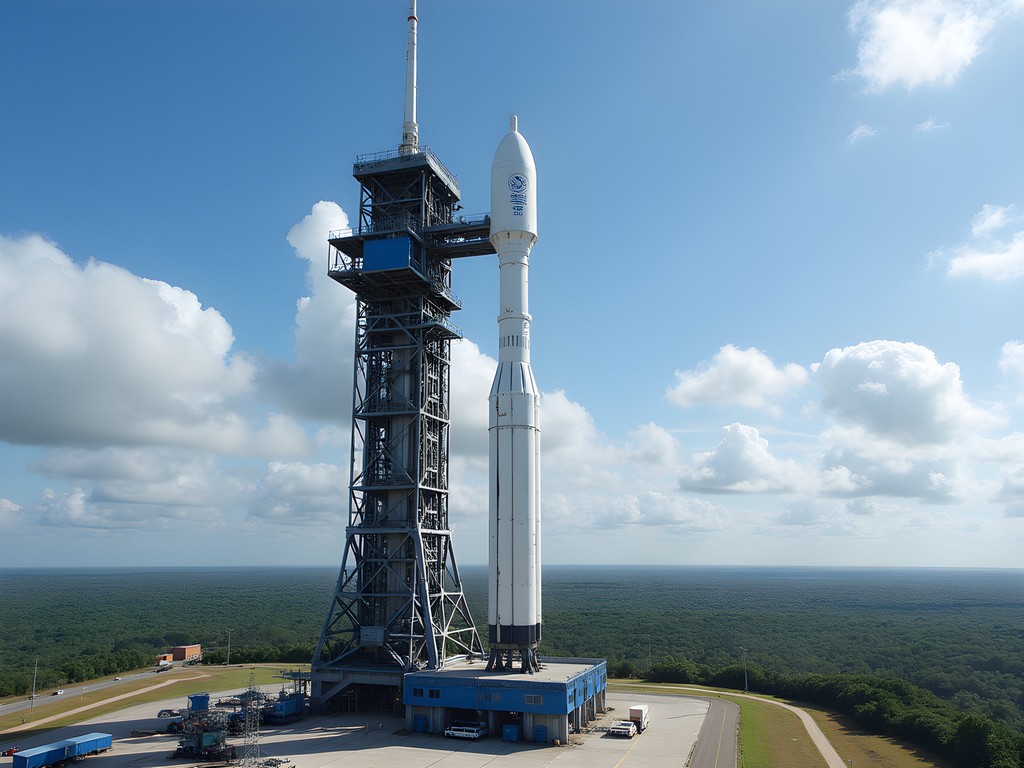
💡 Pro Tips
- Book space center tours at least two weeks in advance, especially if you want an English-language guide
- Bring identification—as an active launch facility, security procedures are strict
- Tours last approximately 3 hours, but allow a full day including transportation from Cayenne
Final Thoughts
As my week in Cayenne drew to a close, I found myself back at Place des Palmistes, watching the evening promenade of families and friends circling the square. Few places on Earth compress such a dramatic historical arc into such a compact space—from indigenous territory to colonial outpost, penal colony to space hub. For students of history, Cayenne offers something rare: the ability to physically trace the complete timeline of European presence in the Americas, from its earliest colonial expressions to its most futuristic manifestations. The city doesn't sanitize its difficult past—the museums acknowledge the brutality of slavery and the penal colony—but neither does it remain trapped there. Like the fermentation processes I've studied across cultures, Cayenne has transformed historical ingredients into something new and distinctive. I invite you to experience this remarkable historical timeline for yourself, to stand where centuries converge, and perhaps even to watch as rockets launch new chapters of human history from this complex and compelling corner of South America.
✨ Key Takeaways
- Cayenne offers a unique opportunity to trace the complete arc of European colonization in the Americas, from early settlement to space-age development
- The city's museums thoughtfully acknowledge difficult histories while celebrating cultural resilience and fusion
- The transition from penal colony to spaceport represents one of history's most dramatic regional transformations
- Public transportation makes it easy to explore both colonial sites and space facilities independently
📋 Practical Information
Best Time to Visit
July to November (dry season) or January to February (fewer tourists)
Budget Estimate
€80-120/day including mid-range accommodation, meals and activities
Recommended Duration
5-7 days
Difficulty Level
Moderate

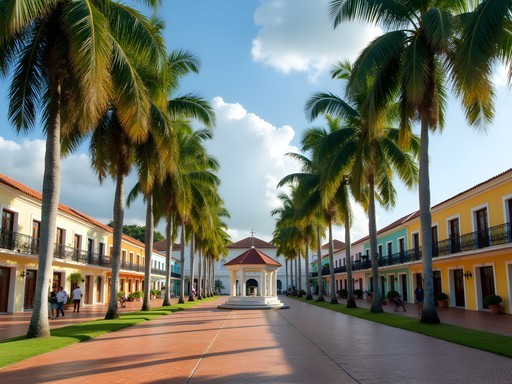

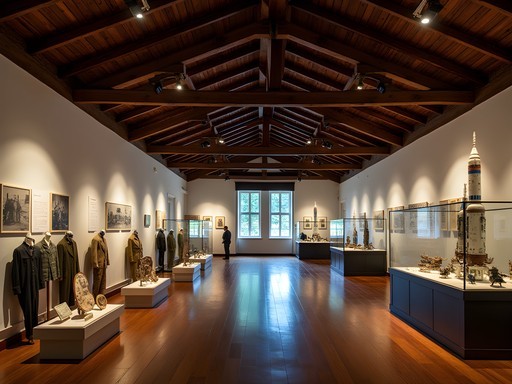




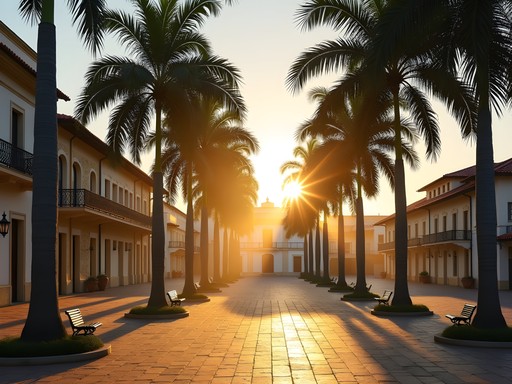






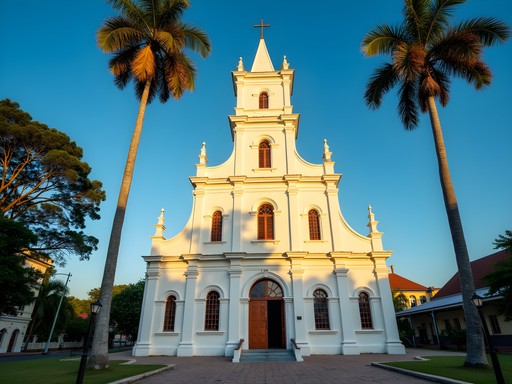
Comments
dreamtime
Did you get to learn much about the local Creole culture? I'm fascinated by how the different cultural influences blend together there.
Larry Allen
The Creole culture was one of my favorite aspects! The Musée Départemental I mentioned has excellent exhibits on this. Also recommend visiting the market on Rue François Arago - vendors are happy to chat about ingredients and cultural significance of different foods. The mix of French, African, indigenous, and Asian influences creates something truly unique.
sunnylover
Just got back from French Guiana last month and your post captures Cayenne perfectly! We stayed near Place des Palmistes and loved the evening atmosphere when locals come out for the promenade. One tip for anyone planning to visit: public transportation is limited, so we ended up renting a car to explore beyond the city center. Worth it to see the surrounding areas! I'd recommend bringing a good travel guide since there's not tons of tourist infrastructure and having offline maps was essential.
dreamtime
Was renting a car expensive there? Thinking of visiting in January.
sunnylover
It was pricier than mainland France - about €60/day for a basic model. But considering how limited public transport is outside Cayenne, definitely worth it. Just book ahead online!
summerstar
Those photos of Place des Palmistes are gorgeous! Love the light filtering through the palms. Really captures the tropical colonial vibe.
Hunter Thompson
Mate, this brings back memories! I backpacked through French Guiana last year and Cayenne was such a unique blend of cultures. That Transportation Museum is seriously underrated - the contrast between the penal colony history and the modern space program blew my mind. Did you get a chance to visit the Kourou Space Centre? It's about an hour away and they sometimes let you watch rocket launches if you time it right. I spent three days in Cayenne and felt it was just right to soak in the colonial vibes without rushing.
Larry Allen
Yes! I did make it to Kourou - planning a separate post about that experience. The tour of the launch facilities was fascinating. Did you try any of the Creole restaurants in Cayenne?
Hunter Thompson
Can't wait to read your Kourou post! And absolutely - the food was incredible. There's a little place near the market called Chez Tantine that does amazing bouillon d'aoura (fish soup). The blend of French techniques with African and indigenous ingredients is something special!
sunsetace6299
Great post! How safe did you find Cayenne for solo travelers? I've heard mixed things about French Guiana but your blog makes it look fascinating.
Larry Allen
Thanks for asking! I found Cayenne quite safe during daylight hours, especially in tourist areas like Place des Palmistes. Just use normal precautions after dark. The colonial center is compact and walkable.
sunsetace6299
That's reassuring, thanks! Adding it to my bucket list for next year.
Sage Dixon
Larry, your post brought back so many memories from my visit to Cayenne three years ago! The historical layers there are truly unique. I remember standing at Fort Cépérou watching a rocket launch from Kourou in the distance - talk about a surreal juxtaposition of centuries! For anyone planning to visit, I'd add that the small botanical gardens near Place des Palmistes are worth exploring too - they showcase the incredible biodiversity of the region. And don't miss the market near the waterfront for amazing local crafts and spices. One practical tip: accommodations in Cayenne can fill up quickly when there's a launch scheduled at the space center, so book well in advance if your dates are flexible and you want to catch that incredible experience!
Larry Allen
Thanks for adding those tips, Sage! You're absolutely right about the botanical gardens - I spent a lovely morning there. And that's excellent advice about booking around launch dates. I was lucky enough to see a small satellite launch and it was unforgettable.
smartninja
Just got back from French Guiana last month and your post captures the essence of Cayenne perfectly! That contrast between colonial buildings and space tech is wild. We spent an evening people-watching at Place des Palmistes just like you described - such a lively atmosphere! The local food scene deserves a mention too - we had amazing Creole dishes with all those French, African and Caribbean influences. Did you try the bouillon d'aoura? Mind-blowing seafood soup! The Transportation Museum was closed for renovations when we visited though - looks like we missed out.
cooltime
How's the weather there? Looks super tropical! Is there a best time to visit?
Larry Allen
It's definitely hot and humid year-round! The drier season from July to December is generally better for sightseeing. I went in May and had some afternoon showers but nothing that ruined plans.
wavemaster
Fort Cépérou looks incredible! Never even heard of Cayenne before this post. Adding it to my bucket list!
wavezone
Is it easy to find English speakers there? My French is terrible!
smartninja
Not the author but I was there in March - English isn't widely spoken outside tourist areas. I used translation app offline mode and it was a lifesaver. Basic French phrases go a long way though!
wavezone
Thanks for the tip! Will definitely download that before going.
Venture X
Premium card with 2X miles, $300 travel credit, Priority Pass